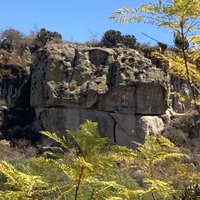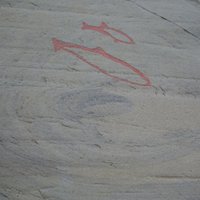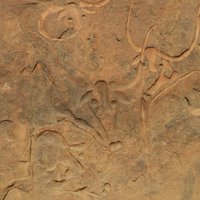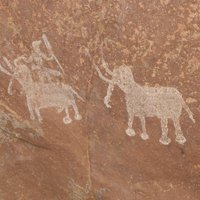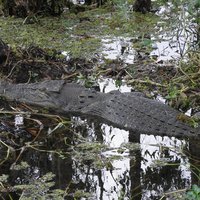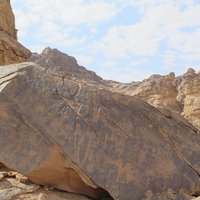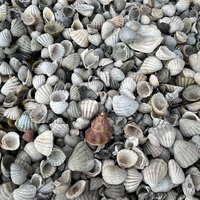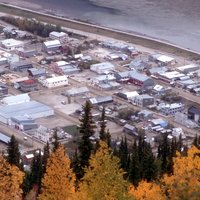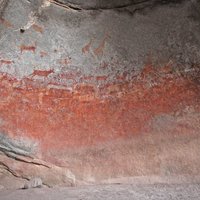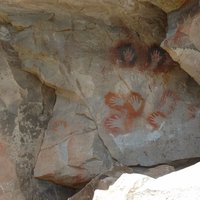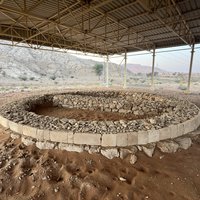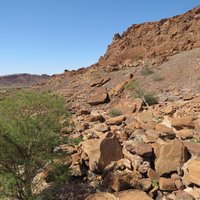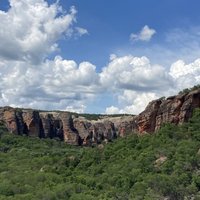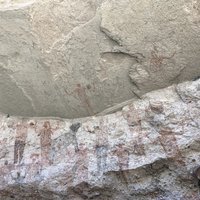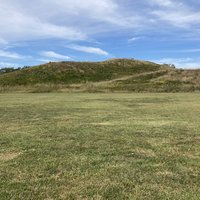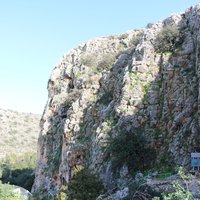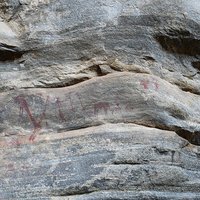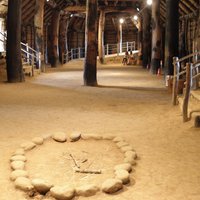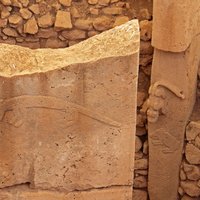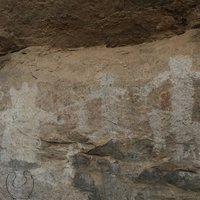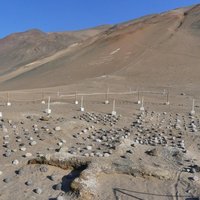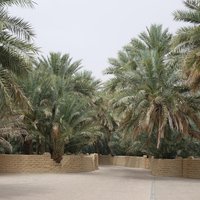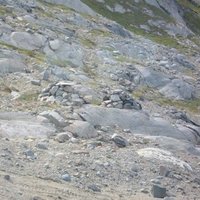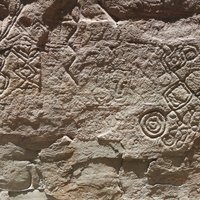Connected Sites
-
This property lconsists of two pre-Hispanic archaeological complexes and a series of pre-historic caves and rock shelters. Some of these shelters provide archaeological and rock-art evidence for the progress of nomadic hunter-gatherers to incipient farmers. (official description)
-
The earliest images reflect a time (11,000 - 6,000 BC) when the area was partly forested and the valley provided a habitat for hunters of large game. (official description)
-
More rock art made by hunter-gatherers is found in Alta than anywhere else in northern Europe. (official description)
-
The art of the Large Wild Fauna Period of the Round Head Period is attributed to hunter-gather peoples.
See africanrockart.org
-
"Bhimbetka is closely associated with a hunting and gathering economy as demonstrated in the rock art and in the relicts of this tradition in the local adivasi villages on the periphery of this site." (Crit v)
-
The cave paintings, rock carvings and archaeological sites record the skills and way of life of the region's inhabitants, from the hunter-gatherers of prehistoric times to the Aboriginal people still living there. (official description)
-
"numerous well-preserved petroglyphs, identifiably different rock art traditions over the period from hunting and gathering to animal domestication and writing" (AB Ev)
-
"The Saloum Delta is an eminent example of traditional human settlement. It represents a lifestyle and sustainable development based on the gathering of shellfish and fishing" (Crit v)
-
Tr'ochëk Component "This component part is located south of Dawson City, on the opposite side of the Klondike River, at its confluence with the Yukon. It was one of the ancient fishing and gathering sites of the Indigenous population. The archaeological evidence attests to Indigenous use of the site at two locations and at two time periods – 500 and 200 years ago. The component part depicts the Indigenous people's subsistence system, their displacement and loss of fishing and hunting camps and grounds." - AB Evaluation Tr'ochëk National Historic Site of Canada "For countless generations, the Hän spent the mid-summer to late fall at fishing camps at Tr'ochëk, where they harvested and dried fish, cleaned skins from moose and caribou and prepared other foods for winter storage." - Parks Canada
See www.pc.gc.ca
-
The authenticity of the hunter-gatherer and a few agriculturist rock paintings in the Matobo Hills area has been widely confirmed. (official description)
-
The people responsible for the paintings may have been the ancestors of the historic hunter-gatherer communities of Patagonia found by European settlers in the 19th century. (official description)
-
"The preserved evidence on-site illustrates the evolution of societal structures, from hunter-gatherer groups to pastoral nomadic herders" (ICOMOS ev)
-
The ǂKhomani Cultural Landscape is uniquely expressive of the hunting and gathering way of life practised by the ancestors of all modern human beings; so are the simple, yet highly sophisticated technologies which they used to exploit scarce resources such as water, find plant foods in an extremely hostile environment, and deal with natural phenomena such as drought and predators. (official description)
-
The site forms a coherent, extensive and high-quality record of ritual practices relating to hunter-gatherer communities in this part of southern Africa over at least 2,000 years, and eloquently illustrates the links between the ritual and economic practices of hunter-gatherers. (official description)
-
According to studies, the area encompassing the Serra da Capivara National Park was occupied by hunters and gatherers, followed by ceramic-farming societies. (official description)
-
The landscape of the area is another significant attribute, understood as the extensive physical space in which, through rock art, the thoughts of their early dwellers, hunter-gatherers people who (sic) living here from the terminal Pleistocene (10,000 BP) until the arrival of Jesuit missionaries in the late seventeenth century, are expressed. (official description)
-
The complex was created and used for residential and ceremonial purposes by a society of hunter fisher-gatherers between 3700 and 3100 BP. (official description)
-
"The emergence of the petroglyphs dates back to the Neolithic era — along with associated archaeological sites, including settlements and burial ground, witnessing the culture of hunter-fisher-gatherers in the North of Europe. The petroglyphs attest to the beliefs and lifestyle of the hunter-fisher-gatherers over a period of 600-800 years, speak of the advanced development of this culture that used these rock art centres as meeting places and show significant artistic qualities and creativity of the Stone Age artists." (Official description)
-
Evidence from numerous Natufian burials and early stone architecture represents the transition from a hunter-gathering lifestyle to agriculture and animal husbandry. (official description)
-
The spectacular collection of images (...) displays sequences that provide a unique testimony to the changing socio-economic base of the area from hunter-gatherer to agro-pastoralist, and the beliefs and ideas associated with the different societies. (official description)
-
"It attests to the emergence, development, maturity and adaptability to environmental changes of a sedentary hunter-fisher-gatherer society which developed from about 13,000 BCE." (Official description)
-
This property presents monumental round-oval and rectangular megalithic structures erected by hunter-gatherers in the Pre-Pottery Neolithic age between 9,600 and 8,200 BCE. (Official description)
-
The rock art reflects the comparatively scarce tradition of farmer rock art, as well as paintings by BaTwa hunter-gatherers who inhabited the area from the late Stone Age. (official description)
-
The Chinchorro were a society of marine hunter-gatherers who lived between 7400 BP and 2840 BP approximately. (Nomination Text, p. 17)
-
The property provides important testimony to the transition of cultures in the region from hunting and gathering to sedentarization. (official description)
-
"Fisher-hunter-gatherer cultures have created an organically evolved and continuing cultural landscape" (official description)
-
"The practice of rock carving in the Bangucheon region was initiated by hunter-gatherers during the Neolithic period. This rock carving tradition was continued by Bronze Age farmers and then by members of the ancient Silla kingdom." - AB Evaluation

